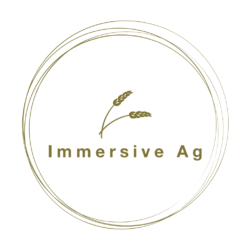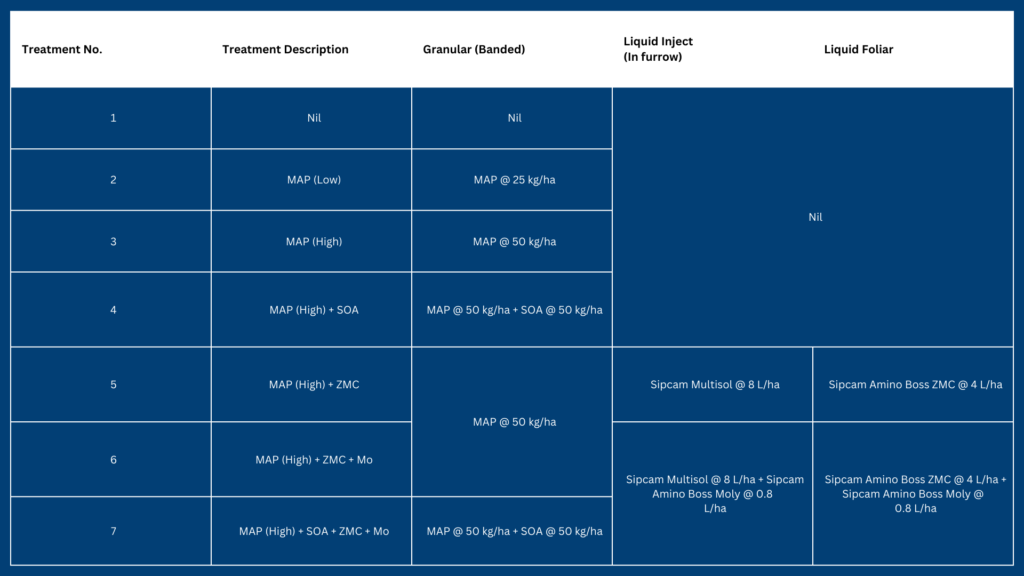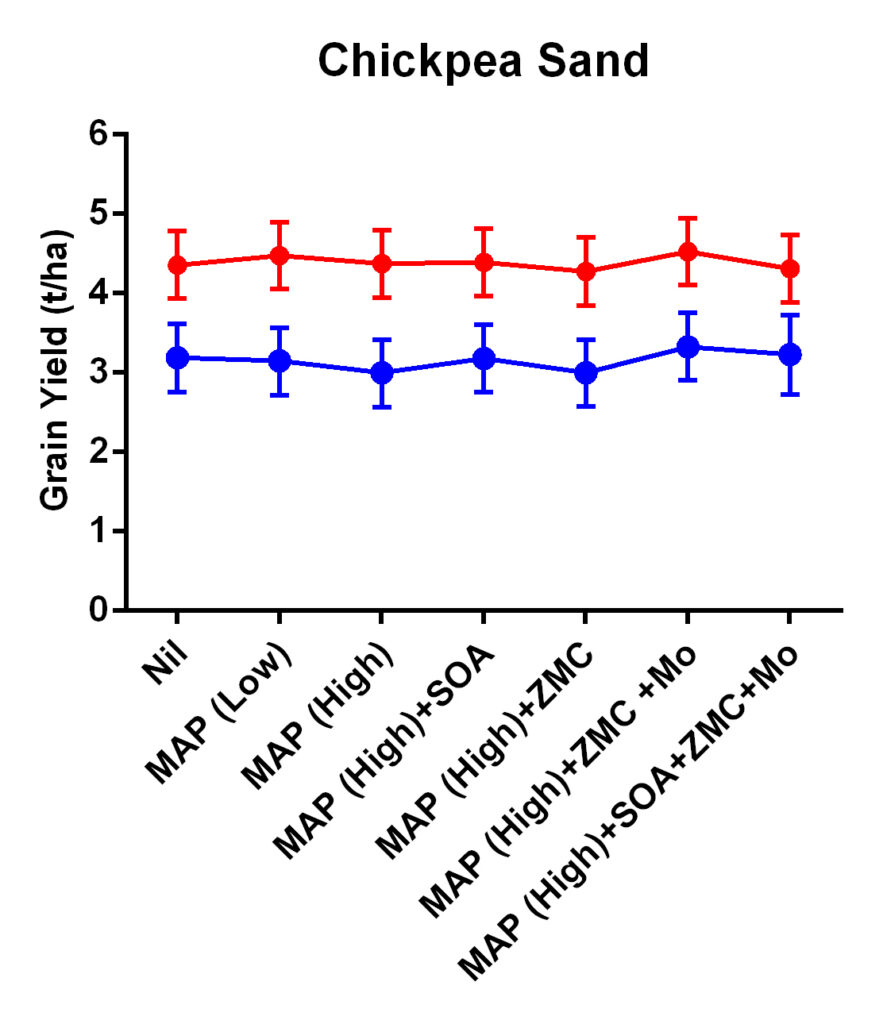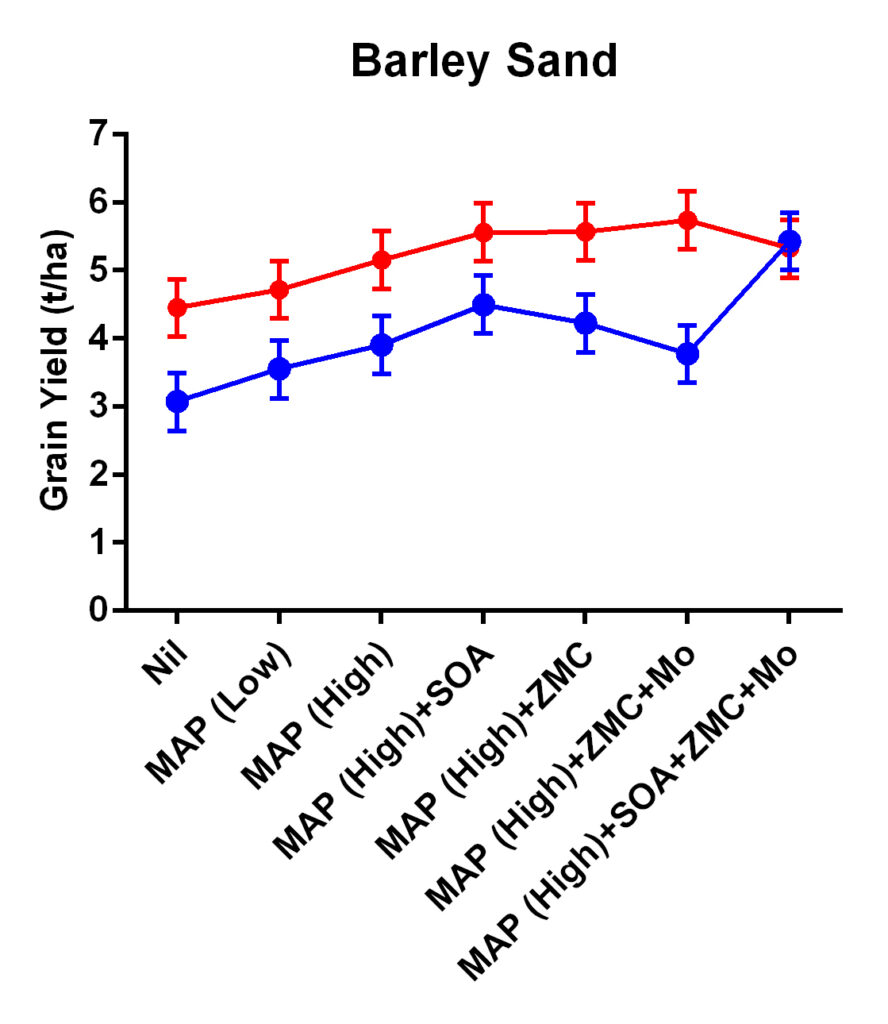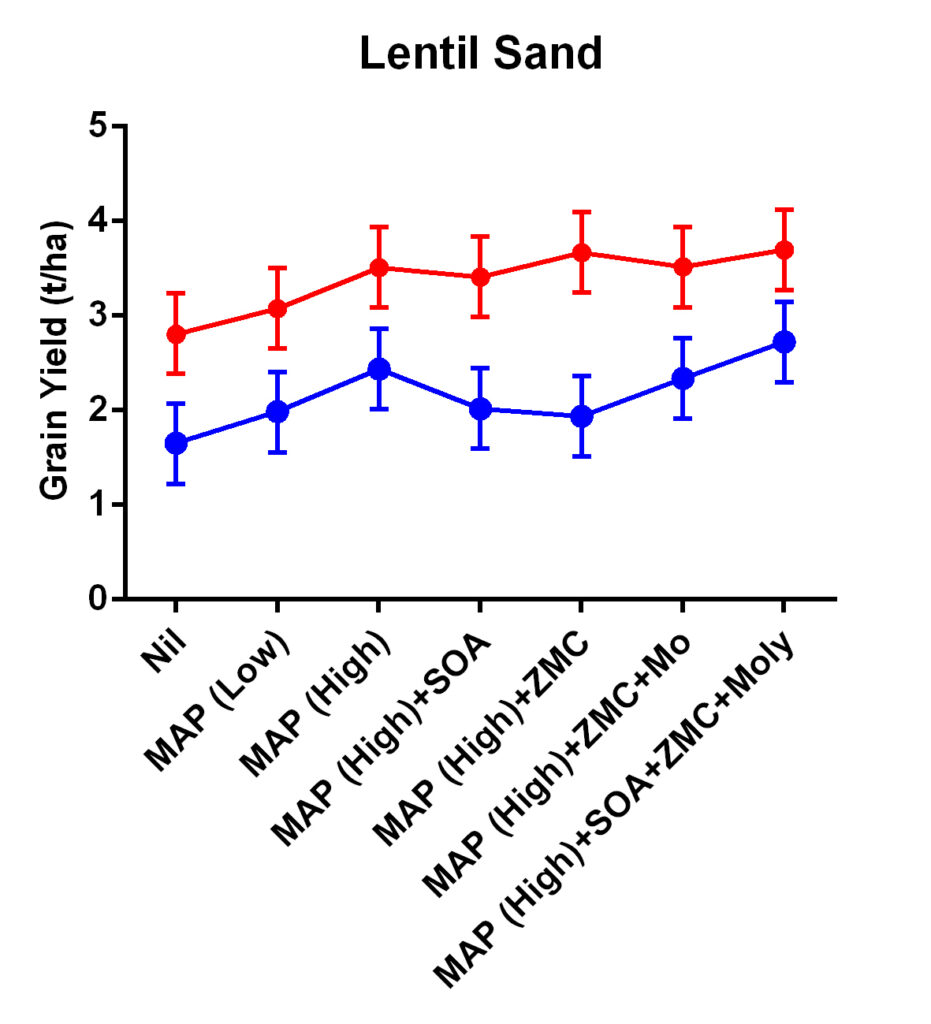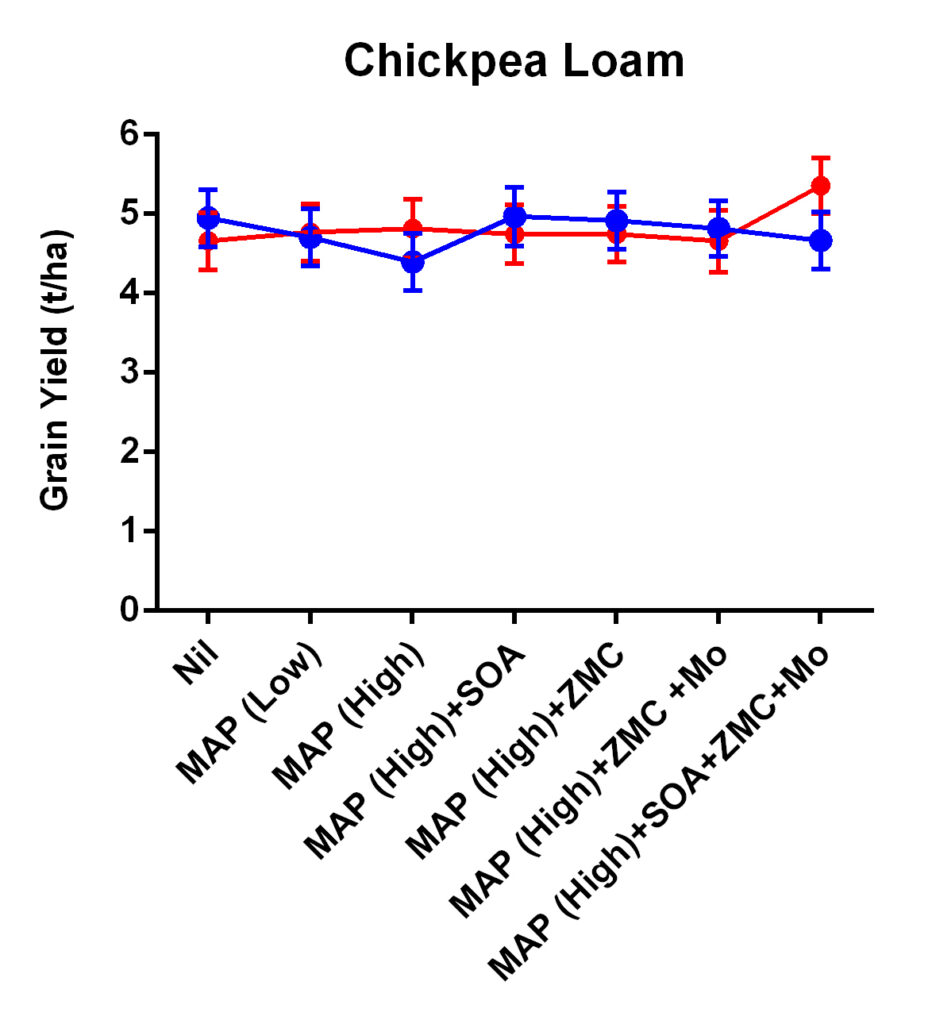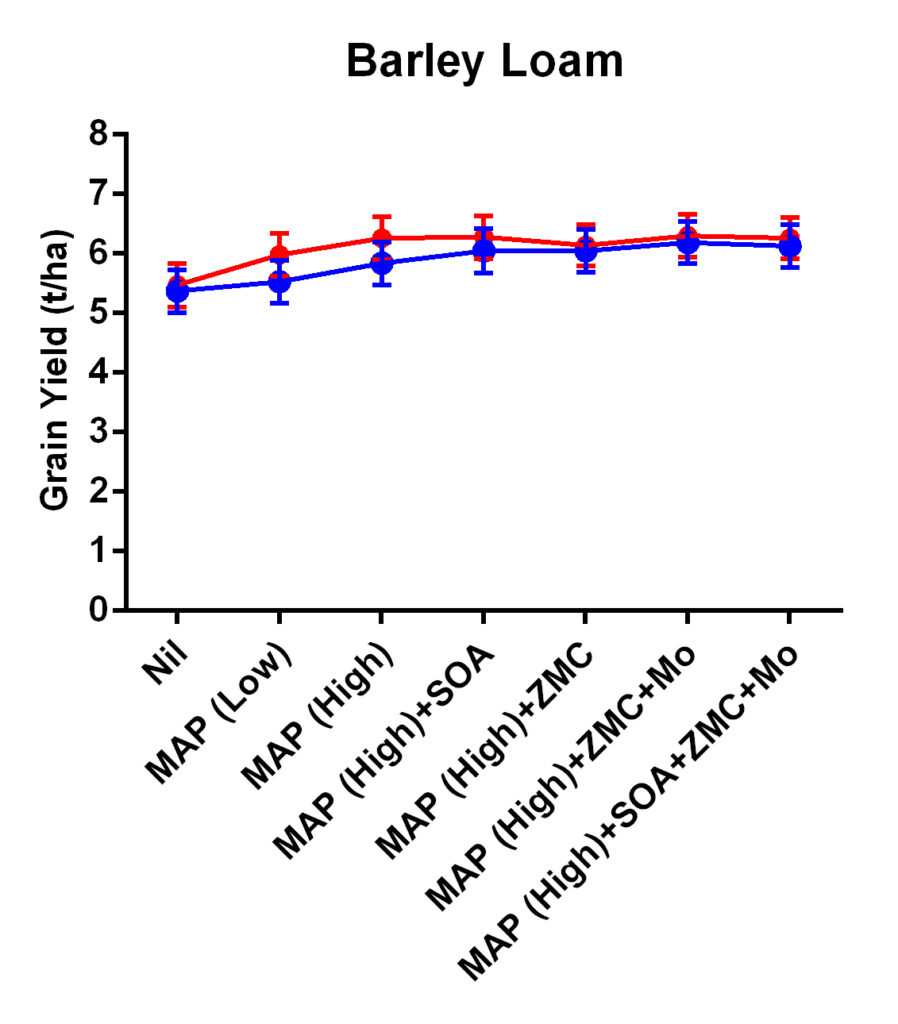About the Trial
The trial compared nutritional treatments for lentil, chickpea and barley grown on a sandy soil with and without deep ripping. There were 7 nutrient treatments (Table 1) applied to the following varieties:
- Lentil: GIA Lightning
- Chickpea: Genesis 090
- Barley: Titan AX
Barley plots also received 70 kg/ha UAN (~30 kg N/ha) applied in crop at early tillering.
All nutrient x crop treatments were applied to plots with and without deep ripping. The soil was ripped to a depth of approximately 50 cm using Tilco straight shank tynes.
The trial was replicated on two soil types within the paddock: A deep sandy soil located on the top of a dune, and a sandy loam soil located in the swale between sandy dunes. Soil properties for each soil can be found here
Results
Deep ripping had the biggest impact on the productivity of lentils, chickpea and barley grown on the sandy soil. The benefit from deep ripping was consistent across all three crops with an extra 1.2 t/ha of grain grown following deep ripping. However, on the loam soil, deep ripping was not beneficial in any crop.
There were some small benefits from nutrition treatments, however these effects were mixed in terms of crop type and soil type. There was approximately 0.7 – 0.8 t/ha grain yield response from applying 50 kg/ha MAP relative to the nil fertiliser treatment in lentils and barley. The rate of response was similar across both soil types, which equated to a rate of return of approximately 15 kg/grain for each one kilogram of MAP applied. In barley, the addition of sulphate of ammonia (SOA) also improved grain yield, but only on the sandy soil type.
The application of trace elements alone did not influence the productivity of any crop or soil type. However, when trace elements were applied in combination with SOA to barley on the un-ripped sandy soil, this combination produced superior grain yields to all other nutrition treatments. This complete nutrition package also closed the yield gap between ripped and un-ripped soil. However, given the extremely high growing season rainfall experienced at the site in 2022, it is probable that barley yields were nitrogen limited. Grain protein levels in barley were 10 – 10.5% which further indicates grain yields reached a nitrogen limited yield potential, which possibly capped the yield benefit achieved by deep ripping in barley.
Acknowledgements
This virtual field day has been developed as part of the Mallee Sustainable Farming (MSF) project:
“Facilitating enhanced knowledge sharing of Mallee sustainable farming practices”
This project is supported by the Mallee Catchment Management Authority, through funding from the Australian Governments’ National Landcare Program.

